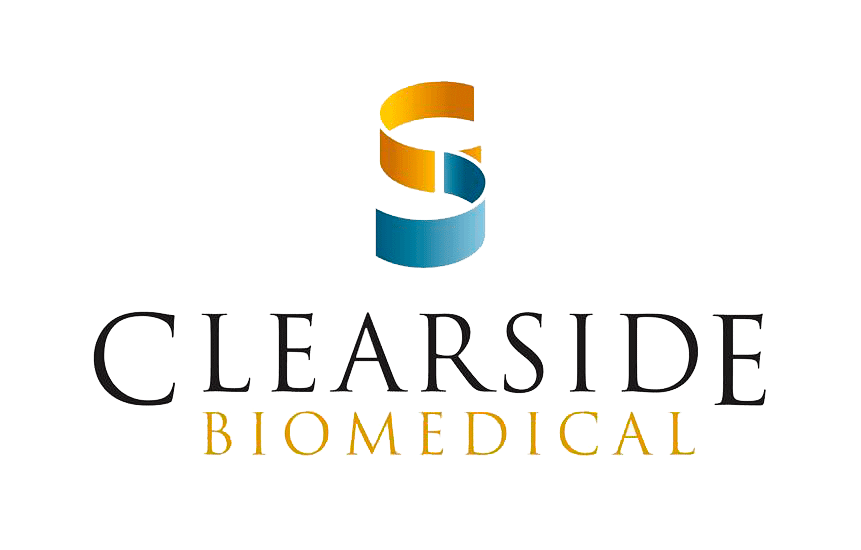
Clearside Biomedical Announces Positive Topline Results from Pivotal Phase 3 Clinical Trial of CLS-TA in Macular Edema Associated with Non-Infectious Uveitis
Print 05 March 2018
Primary Endpoint Achieved – Statistically Significant Improvement in Proportion of Patients Gaining 15 or More Letters in Visual Acuity
All Key Secondary Endpoints Achieved
Clearside to Host Conference Call Today at

Suprachoroidal CLS-TA is Clearside’s proprietary suspension of the corticosteroid triamcinolone acetonide formulated for administration to the back of the eye via the suprachoroidal space, or SCS™, which is the space located between the choroid and the outer protective layer of the eye known as the sclera.
Clearside enrolled 160 patients in this randomized, controlled, masked Phase 3 pivotal clinical (“PEACHTREE”) trial. Of the 160 patients enrolled, 96 patients were randomized to the treatment arm to receive two 4.0 mg doses of suprachoroidal CLS-TA 12 weeks apart, and 64 patients were randomized to undergo sham procedures at the same 12-week interval. Patients were evaluated every four weeks for a total of 24 weeks, and a total of 155 patients, or 97% of those enrolled, completed the full evaluation period of the trial.
In the PEACHTREE trial, 47% of patients who received suprachoroidal CLS-TA every 12 weeks gained at least 15 letters in best corrected visual acuity (“BCVA”), as measured using the Early Treatment of Diabetic Retinopathy Study (“ETDRS”) scale, from baseline at week 24, compared to 16% of patients who underwent a sham procedure. This improvement, which was the primary endpoint of the trial, was statistically significant (p < 0.001). Further, in terms of improvements in BCVA, the mean change from baseline was better in the treatment arm than the sham arm at each monthly evaluation. The mean improvement from baseline was maintained throughout the evaluation period, with 9.6 letters gained at week 4 and 13.7 letters at week 24 in the active arm, compared to 1.2 letters at week 4 and 2.9 letters at week 24 in the control arm, respectively.
The following tables summarize the topline BCVA improvement data observed in the PEACHTREE trial:
Subjects Gaining ≥ 15 ETDRS Letters at Week 24 from Baseline
| CLS-TA (N=96) |
Control (Sham) (N=64) |
|
| Proportion (n) of Subjects Gaining ≥ 15 ETDRS Letters at Week 24 from Baseline | 46.9% (45) <0.001 |
15.6% (10) |
| p-value | ||
Mean Change from Baseline
| Change from Baseline in Each Arm | CLS-TA Arm [ETDRS Letters] | Control Arm (Sham) [ETDRS Letters] |
| Week 4 | 9.6 | 1.2 |
| Week 24 | 13.7 | 2.9 |
For the other key secondary endpoint, administration of suprachoroidal CLS-TA resulted in a mean reduction from baseline of 157 microns in central subfield thickness at week 24 in the active arm compared to a 19 micron mean reduction in the sham arm, a result that was also statistically significant (p < 0.001).
Suprachoroidal CLS-TA was generally well tolerated, with no treatment-related serious adverse events reported in the trial. Through 24 weeks, corticosteroid-related elevated intraocular pressure adverse events were reported for approximately 11.5% of patients in the CLS-TA treatment group, compared to no patients in the sham group.
Detailed results from PEACHTREE will be presented at an upcoming medical conference.
“These positive topline data from PEACHTREE are very encouraging for this population with macular edema as a complication due to their uveitis,” said
“Having nearly 50% of the PEACHTREE trial patients treated with suprachoroidal CLS-TA gain 15 or more letters in vision is highly compelling. It represents a huge step forward in advancing suprachoroidal administration of CLS-TA towards becoming a powerful new approach in potentially treating blinding eye diseases,” said
Suprachoroidal CLS-TA, used either alone or together with an intravitreal anti-VEGF agent, is being studied as part of Clearside’s pipeline of treatments for unmet or underserved blinding eye diseases where the pathologies manifest in the retina and the choroid.
Conference Call & Webcast Details
Clearside is pleased to invite all interested parties to participate in a conference call today at
About PEACHTREE
PEACHTREE, a randomized, masked, sham-controlled Phase 3 trial, enrolled 160 patients with macular edema associated with non-infectious uveitis. Patients were randomized to receive two unilateral suprachoroidal CLS-TA injections or two unilateral suprachoroidal sham procedures approximately 12 weeks apart. The primary efficacy outcome measure in the trial was the proportion of patients with a change from baseline of at least 15 letters in BCVA using the ETDRS scale at 24 weeks. Safety was assessed by analyzing the occurrence of adverse events and changes in key safety parameters over the course of the trial. Additional efficacy and safety endpoints were also evaluated.
About Uveitis
Uveitis, a set of inflammatory conditions affecting the eye, is one the world’s leading causes of blindness. Uveitis occurs in about 350,000 patients in
About Clearside
Cautionary Note Regarding Forward-Looking Statements
Any statements contained in this press release that do not describe historical facts may constitute forward-looking statements as that term is defined in the Private Securities Litigation Reform Act of 1995. These statements may be identified by words such as “believe”, “expect”, “may”, “plan”, “potential”, “will”, and similar expressions, and are based on Clearside’s current beliefs and expectations. These forward-looking statements include expectations regarding the clinical development of Clearside’s product candidates, the potential attributes and benefits of Clearside’s product candidates and the timing of Clearside’s submission of a new drug application to the
All Portfolio
MEDIA CENTER
-
The RMI group has completed sertain projects
The RMI Group has exited from the capital of portfolio companies:
Marinus Pharmaceuticals, Inc.,
Syndax Pharmaceuticals, Inc.,
Atea Pharmaceuticals, Inc.

